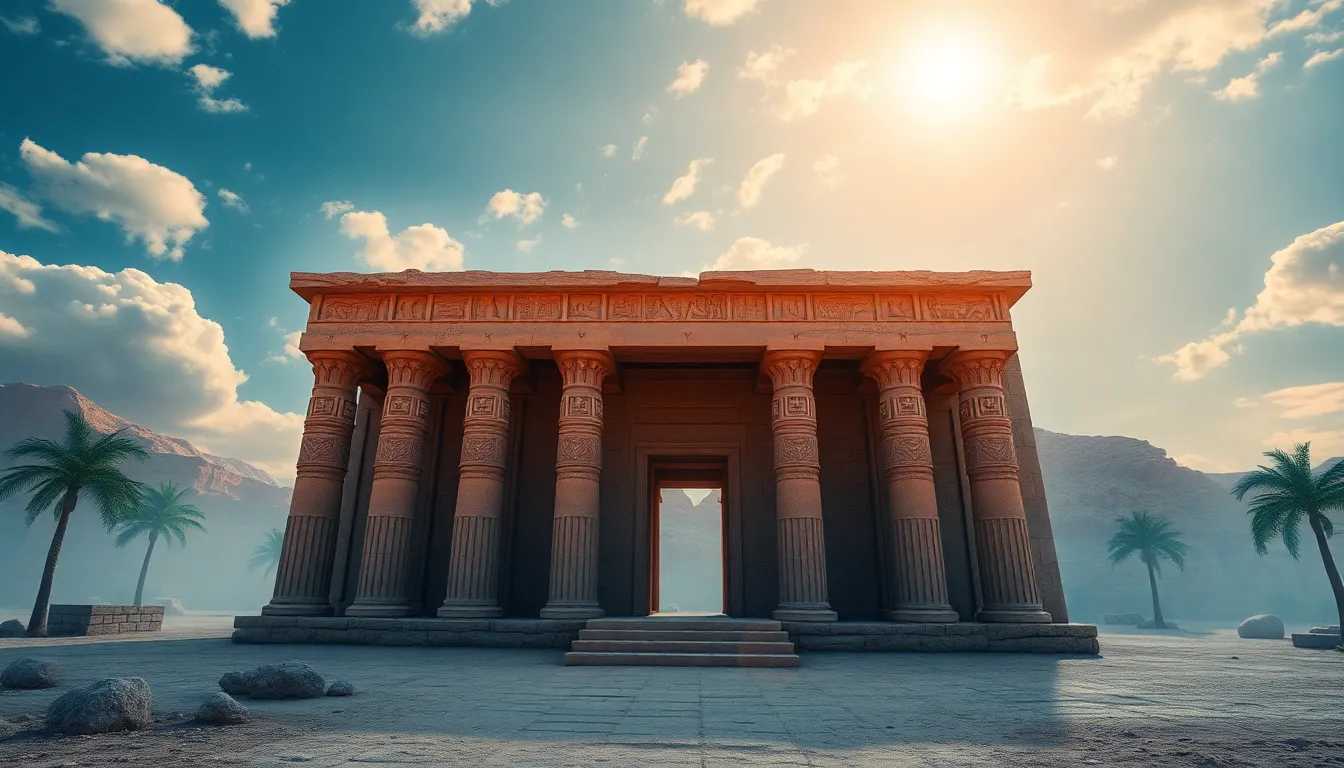The Hidden Treasures of Ancient Egyptian Temples
I. Introduction
Ancient Egyptian temples stand as monumental testaments to the grandeur of one of the world’s oldest civilizations. These sacred sites were not merely places of worship; they were intricate centers of culture, economy, and social life. The significance of temples in ancient Egyptian culture cannot be overstated, as they served as the focal points for religious ceremonies, community gatherings, and the expression of art and architecture.
Within these magnificent structures lie the concept of hidden treasures—both literal and metaphorical. From sacred artifacts to the rich narratives embedded in their stones, the treasures of Egyptian temples beckon researchers and enthusiasts alike to explore their depths.
II. The Historical Context of Ancient Egyptian Temples
The history of ancient Egyptian temples spans thousands of years, reflecting the evolution of religious practices and architectural styles. Here is a brief timeline of temple construction:
- Early Dynastic Period (c. 3100-2686 BCE): Initial development of temple architecture with simple structures.
- Old Kingdom (c. 2686-2181 BCE): The construction of the first monumental temples, such as the Sun Temple of Ra.
- Middle Kingdom (c. 2055-1650 BCE): Expansion of temple complexes, including the Temple of Karnak.
- New Kingdom (c. 1550-1070 BCE): Peak of temple construction with grand edifices like the Temple of Luxor.
Each key dynasty contributed to the architectural and cultural heritage of Egypt. Temples served dual roles in religion and society, acting as places of worship and as economic hubs where offerings and tributes were collected. They were dedicated to various deities, each representing different aspects of life and nature.
III. Architectural Marvels
The design and layout of ancient Egyptian temples are testaments to the civilization’s architectural prowess. Most temples were constructed with a series of enclosed courtyards, halls, and sanctuaries that served specific religious functions. The temples typically featured:
- Pylons: Monumental gateways that marked the entrance.
- Hypostyle halls: Large rooms supported by columns, often elaborately decorated.
- Sacred sanctuaries: The innermost chambers housing the cult statue of the deity.
The symbolism embedded in architectural features was profound. For example, the alignment of temples with celestial bodies reflected the belief in the divine connection between earth and the heavens. Innovations in construction techniques, such as the use of massive stone blocks and precise alignment, allowed these structures to stand the test of time and remain awe-inspiring to this day.
IV. Sacred Artifacts and Relics
Temples were repositories of various sacred artifacts and relics, which played crucial roles in religious rituals. Some of the types of treasures found in temples include:
- Statues: Representations of gods and pharaohs, often made from precious materials.
- Jewelry: Elaborate adornments used in ceremonies and offerings.
- Offerings: Food and goods left by worshippers as tributes to the gods.
The importance of these sacred objects in rituals cannot be overstated. They were believed to embody the presence of the divine, facilitating communication between the gods and the people. Notable discoveries, such as the treasures of Tutankhamun, have shed light on the historical significance of these artifacts and their cultural context.
V. The Role of Temples in Daily Life
Beyond their spiritual significance, temples played a vital role in the daily life of ancient Egyptians. They were centers of community and commerce, where people gathered for various purposes. The interaction between priests and the public was crucial, as priests performed rituals, provided counsel, and managed temple resources.
Festivals and events held at temples were significant social occasions that fostered community spirit. These included:
- Religious festivals: Celebrating the gods with music, dance, and offerings.
- Market days: Where goods were exchanged and economic activities flourished.
- Cultural events: Showcasing art, music, and storytelling.
VI. Archaeological Discoveries
The study of ancient Egyptian temples has been greatly enhanced by archaeological discoveries over the past few centuries. Major excavations have uncovered hidden chambers, inscriptions, and invaluable artifacts that provide insight into the lives of ancient Egyptians. Notable archaeologists, such as Howard Carter and Zahi Hawass, have made significant contributions to our understanding of these sites.
Modern technologies, such as ground-penetrating radar and 3D scanning, have revolutionized the way archaeologists explore these ancient structures. These innovations allow researchers to uncover hidden features and understand the construction methods employed by the ancient Egyptians.
VII. The Continuing Mystery of Hidden Treasures
The allure of hidden treasures continues to captivate the imagination. Myths and legends abound regarding undiscovered riches buried within the walls of ancient temples. These stories often depict secret chambers filled with gold, jewels, and sacred objects, waiting to be unearthed.
Ongoing searches and explorations by treasure hunters and archaeologists alike highlight the potential for new discoveries. However, the impact of treasure hunting on archaeological sites can be detrimental, often leading to the destruction of valuable historical context. It is crucial to balance the pursuit of treasure with the need to preserve these sites for future generations.
VIII. Conclusion
The legacy of ancient Egyptian temples endures, continuing to inspire awe and curiosity. Their historical significance extends beyond their physical structures; they represent the cultural, religious, and social fabric of ancient Egypt. Preserving these treasures is vital for understanding our shared human history and heritage.
As we delve deeper into the mysteries of these ancient sites, it becomes increasingly important to support archaeological efforts and promote responsible exploration. The hidden treasures of ancient Egyptian temples await further discovery, and with them, the stories of a civilization that continues to enlighten us today.




